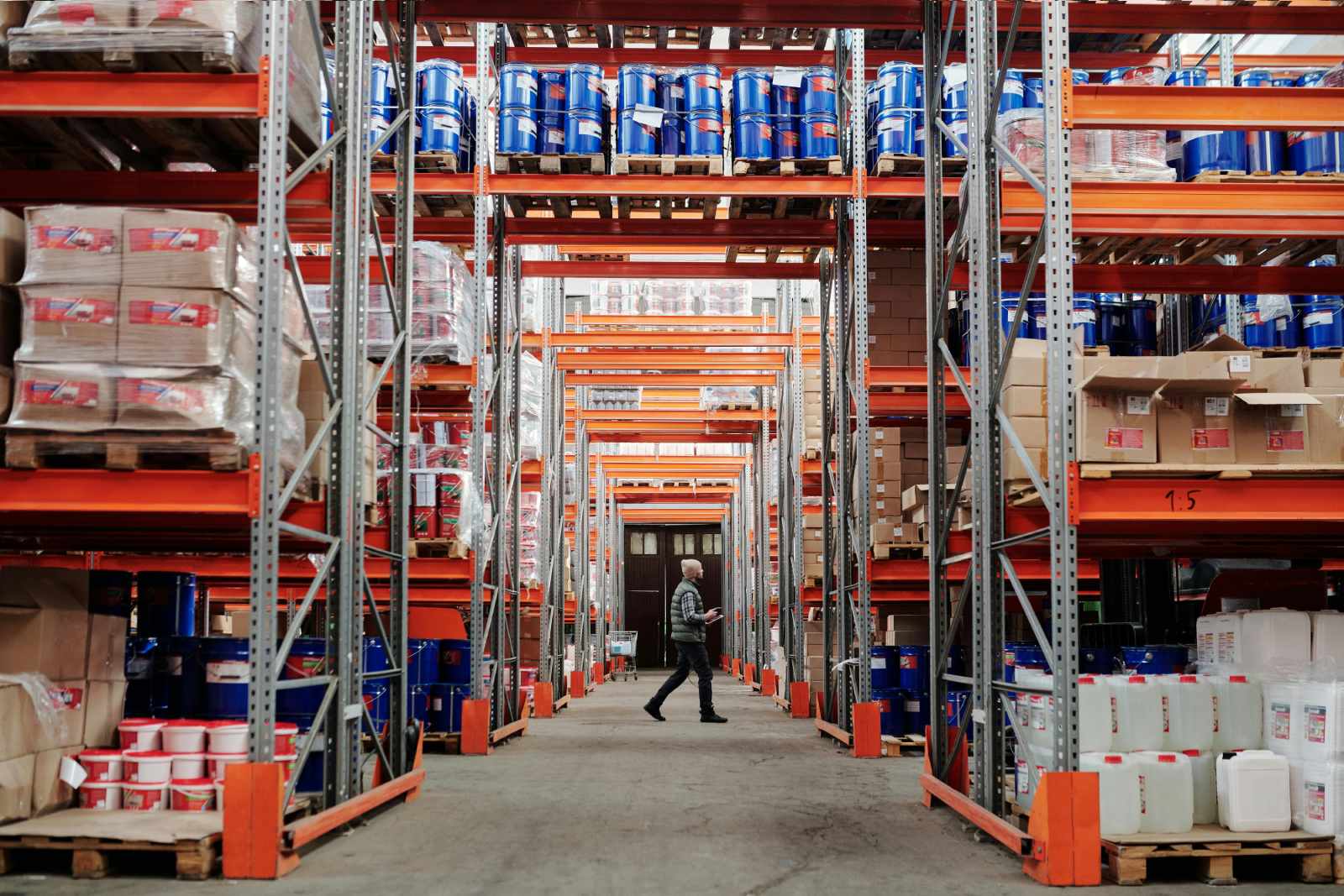Apparel supply chain transparency: Fashion traceability
Fashion Traceability is fast becoming quintessential in modern fashion.
It helps foster greater accountability in making the clothes, sourcing, and distribution.
With growing consumer awareness and compliance requirements, fashion brands are under pressure to adhere to environmental standards and consumer demands.
New sustainability regulations are compelling brands to embrace transparent practices across their entire fashion supply chain. These policies shape compliance requirements that every brand must meet.
Whether you’re a multinational fashion house or a small independent label, adopting clothing traceability tools is no longer a choice.
It’s essential for meeting legal standards and maintaining credibility in a sustainability-driven market.
Key Regulations Impacting Fashion supply chain tracking
EU Strategy for Sustainable fashion supply chain and Circular Textiles
This initiative aims to transform the textile industry into a greener sector.
It promotes longer product life cycles, recycling, and responsible consumption, aiming to reduce the environmental footprint of clothing production and waste.
Corporate Sustainability Reporting Directive (CSRD)
The CSRD introduces mandatory sustainability reporting for brands operating in the EU. Fashion companies must disclose comprehensive data on environmental and social impacts. This promotes accountability and comparability across fashion industries.
Textile traceability: Digital Product Passport (DPP)
The DPP initiative ensures complete transparency throughout a product’s lifecycle.
It requires fashion items to include detailed information on materials used, sourcing practices, and environmental impact.
This data must be accessible digitally by consumers and regulators.
Ecodesign for Sustainable Products Regulation (ESPR)
This regulation enforces that fashion products meet specific design standards, prioritizing durability, repairability, and recyclability.
The goal is to minimize waste to create an eco-friendly clothing supply chain market.
Green fashion traceability Claims Directive
This directive targets misleading sustainability marketing.
Brands must substantiate their environmental claims with clear, verifiable evidence, reducing the risk of greenwashing and ensuring honest communication with consumers.
European General Product Safety Regulation
Approved in May 2023 the new European General Product Safety Regulation (GPSR – Regulation 2023/988) has been in force since 13th December 2024 and updates the previous directive of 2001 (2001/95/EC).
Its purpose is the “protection of consumers and their safety”.
The regulation applies to all consumer products placed on the European market, whether new, used, repaired or reconditioned.
It is sufficient for a product to be made available, even online, to European consumers for it to fall within the scope of the regulation.
For fashion products, fire risk, toxicological risks and mechanical risks are monitored.
How Fashion Brands Are Adapting to Compliance
Sustainability Data Collection
To comply with evolving regulations, brands are adopting systems to monitor and document the origin of fashion materials, manufacturing practices, and emissions.
Fabric origin Tracking
Companies must now trace raw materials like organic cotton, recycled polyester, or animal-derived fibres back to their sources.
This step is vital for compliance with frameworks like the EU textile regulations strategy.
Eco-friendly clothing supply chain: Production Process Monitoring
Eco-conscious manufacturing involves reducing environmental impact through methods like water-efficient dyeing, limiting harmful chemicals, and transitioning to renewable energy. Tools like Life Cycle Assessment (LCA) help quantify these efforts.
Sustainable fashion: Carbon Footprint Measurement
Brands are increasingly required to publish data on greenhouse gas emissions from production to delivery.
Initiatives like the European Green Deal and CSRD emphasize transparency in carbon tracking and reduction efforts.
Traceability in fashion industry: Digital Solutions
Modern technology is reshaping traceability.
Brands are integrating digital tools to streamline data collection and reporting across clothing supply chains.
- Blockchain fashion traceability for Transparency: Immutable records on blockchain platforms help verify product claims, enhancing trust in sourcing and sustainability data.
- RFID in fashion supply chain & QR code clothing labels: Smart tags allow anyone, from consumers to auditors, to instantly access details about a product’s lifecycle, including sourcing, environmental impact, and certifications.
- AI-Powered Analytics: AI in fashion traceability helps monitor supply chain performance in real time, identify potential risks, and forecast compliance issues before they arise.
Green fashion traceability: Supplier & Material Verification
Verifying clothing supply chain partners is critical to meeting ethical and environmental standards.
- Ethical Labor Compliance: Brands must ensure suppliers adhere to labour laws and fair working conditions.
Certifications and independent audits are used to validate compliance. - Eco-friendly clothing & Environmental Compliance: Suppliers must meet environmental criteria, including certifications for organic content and restrictions on harmful substances under regulations like REACH.
The REACH regulation (Registration, Evaluation, Authorisation, and Restriction of Chemicals) is a critical EU regulation that governs the use of chemical substances in various industries, including textiles - Third-Party Verification: Collaborating with independent certifiers helps brands validate their sustainability claims and maintain credibility.
Challenges in Implementing Regulatory fashion Traceability
Clothing traceability: Data Availability & Standardization Issues
Accessing complete and accurate data across the fashion supply chain remains a challenge, especially when suppliers are small, many and scattered across different regions with varying documentation standards.
Textile traceability: Technology Barriers
While tools like RFID and blockchain offer powerful traceability capabilities, the costs and complexity of these technologies can be a hurdle for many businesses.
Textile traceability: Compliance Costs & Reporting Burden
Smaller brands often struggle to afford the resources needed for audits, data uploading and reporting, and system upgrades, while larger corporations must manage compliance across vast, complex supply chains.
Textile traceability: Lack of Industry-Wide Standardization
Different regions implement different sustainability regulations, making it difficult for global brands to create unified compliance strategies.
For Small fashion Brands:
- Higher expenses for audits and certifications
- Difficulty accessing verified sustainable fashion suppliers
- Limited resources for adopting textile digital traceability tools
- Risk of being excluded from retailers that demand strict compliance
For Large fashion Brands:
- Complex supply networks (with many tiers), complicate data collection
- Navigating overlapping regulations from multiple regions (e.g., EU and US laws)
- Upgrading legacy infrastructure to support emerging technologies like blockchain fashion traceability and AI and smart data management in fashion traceability
Fashion product tracking Case Studies: How Fashion Brands Are Implementing Regulatory Traceability
Luxury Brand: Tod’s – Digital Product Passport for Transparency and Consumer Trust
Tod’s has introduced Digital Product Passport fashion for its signature Di Bag, embedding NFC chips that provide complete transparency into materials and craftsmanship.
Customers can tap their smartphones to access real-time information on sourcing and certifications.
Blockchain fashion traceability and NFTs further secure product authenticity and ownership.
Result: Greater consumer trust, enhanced brand transparency, and effective anti-counterfeiting measures.
Small Sustainable Brand: ISTO. – Ethical Sourcing and Full Supply Chain Disclosure
Portuguese brand ISTO prioritizes transparency by openly sharing its textile supply chain details and cost structures.
The company uses organic and recycled materials and works only with verified ethical manufacturers, aligning with EU regulatory requirements.
Result: Stronger consumer trust, full compliance with sustainable fashion standards, and a dedicated customer base that values openness.
Fast Fashion: Shein – Regulatory Compliance Challenges and the Push for Sustainability
Shein has come under increasing regulatory pressure for its opaque supply chain and environmental impact.
In response, the brand has launched initiatives to audit suppliers, improve Clothing traceability, and reduce emissions. However, balancing these goals with the speed and scale of fast fashion remains an ongoing challenge.
Result: Heightened scrutiny, increased sustainability efforts, and a gradual shift toward more transparent practices.
Future Trends in Fashion Traceability & Compliance
Expansion of DPP Requirements
Digital Product Passport fashion will become standard for textile products by 2030, offering consumers and regulators direct insight into every stage of a product’s lifecycle.
Increased Pressure on Greenwashing
Brands can be seriously damaged if they falsely promote their products as environmentally friendly to attract eco-conscious consumers, while their actual practices remain unsustainable.
Expect stricter enforcement of sustainability claims, with more rigorous proof required for marketing statements about environmental benefits.
AI in fashion traceability & Automation
Artificial intelligence will streamline compliance, helping brands monitor supply chains, detect risks, and generate accurate sustainability reports.
EU textile regulations & Global Regulatory Alignment
Countries beyond the EU are introducing similar sustainability frameworks, signalling a global shift toward unified traceability and environmental responsibility.
Fashion supply chain tracking: Next Steps
Since traceability is the ability to track, monitor and control the history of an item through all stages of production, processing and distribution, in the textile industry, which has a very long series of suppliers (the so-called “Tier”, the levels of sub-suppliers), up to the 5th level, the technology and the data collection is very relevant, to allow the physical tracking of a garment from the raw material to the finished product, ensuring that each stage meets certain standards of provenance, quality, ethics and sustainability.
Fashion’s regulatory landscape is therefore rapidly evolving, with clothing traceability emerging as a key requirement for legal compliance and consumer trust.
Staying ahead means investing in technologies, partnerships, and processes that ensure transparency from raw material to the final product.
Brands that take proactive steps now will be better equipped to meet future regulations and build stronger, more sustainable relationships with their customers.
Curious about how other sectors are adapting to regulatory traceability?
Read more: Regulatory Traceability in Automotive: Battery Passport & Sustainable Supply Chains





